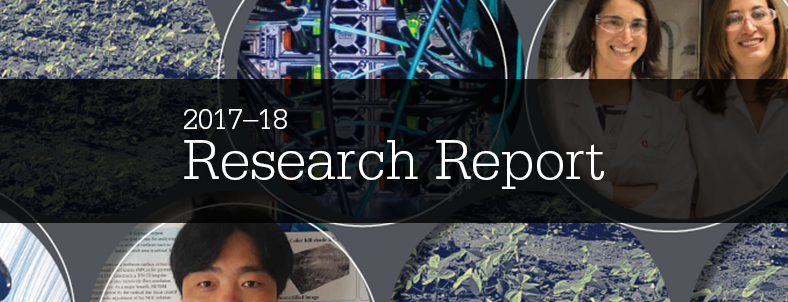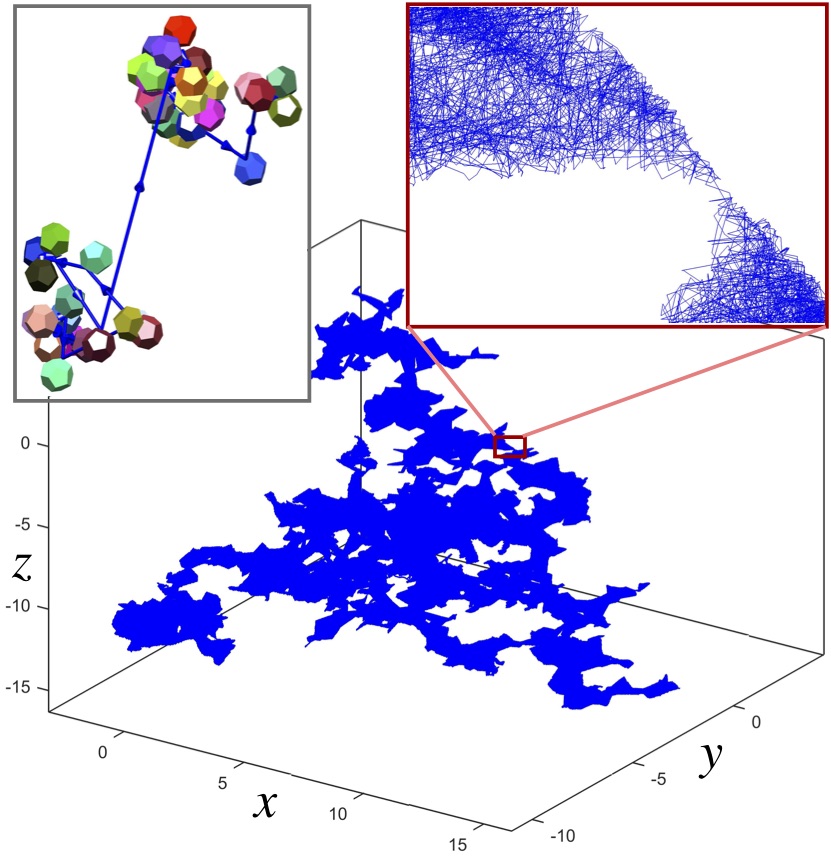While Youngstown State University physics professor Donald J. Priour, Ph.D., isn’t a barista, his field of research – percolation – does have ramifications for brewing a cup of joe, as well as for seepage of hydraulic fracking chemicals, the spread of forest fires and the galactic formation of the universe.
“There’s a class of problems called percolation theory, and it’s been studied for a long time,” Priour said. “Water percolates down through coffee grounds. Because the spaces between the grounds are wide enough, the water can get through. If the spaces weren’t, water couldn’t get through easily. Something’s either permeable or it isn’t.”
More specifically, Priour’s research group is studying void percolation, finding how densely packed the barrier particles need to be before the flow cuts off completely. To determine this limit, Priour simulated a quantity of spherical particles aligned at a certain density, set the surface attribute to reflective and then directed a simulated light beam into the particles from various positions and angles. He calculated each ray of light as it bounced off of each particle. The average point at which the light failed to pass through the voids surrounding the particles established the percolation threshold for a specific particle type and density.
However, Priour understood spheres don’t approximate natural granularity very closely. “If you look at sand, its particles are very random and pointy, more polyhedral, so we started looking at faceted particles,” he said.
Priour’s group began examining the Platonic solids: the tetrahedron, cube, octahedron, dodecahedron and icosahedron. To remain computationally efficient, the researchers initially simulated each barrier particle as a sphere, except when the light ray intersected with the particle boundary, at which point that particular sphere was recalculated as a multi-faceted shape.
Platonic solids, though, presented an additional complication over spheres; rotated spheres don’t change the results. On the other hand, randomly rotated polyhedral might be expected to produce different reflective angles than aligned polyhedra. To find out for certain Priour had to code for 40,000 light rays, each bouncing a million times through 125 million barrier particles for each of five types of particles presenting four, six, eight, 12 or 20 facets. Surprisingly the result was that only for the case of cubes was there a difference between the rotated and non-rotated cases.
“That was computationally intensive, and in one week we calculated percolation thresholds for all five platonic solids using Fortran and 256 cores of the Owens Cluster,” Priour said. “My job would still be running right now if it hadn’t been for the Ohio Supercomputer Center.”
Project Lead: Donald J. Priour, Ph.D., Youngstown State University
Research Title: Percolation through Voids around Randomly Oriented Platonic Solids
Funding Source: Youngstown State University
Website: https://www.ysustem.com/faculty-faction-dr-donald-priour/

